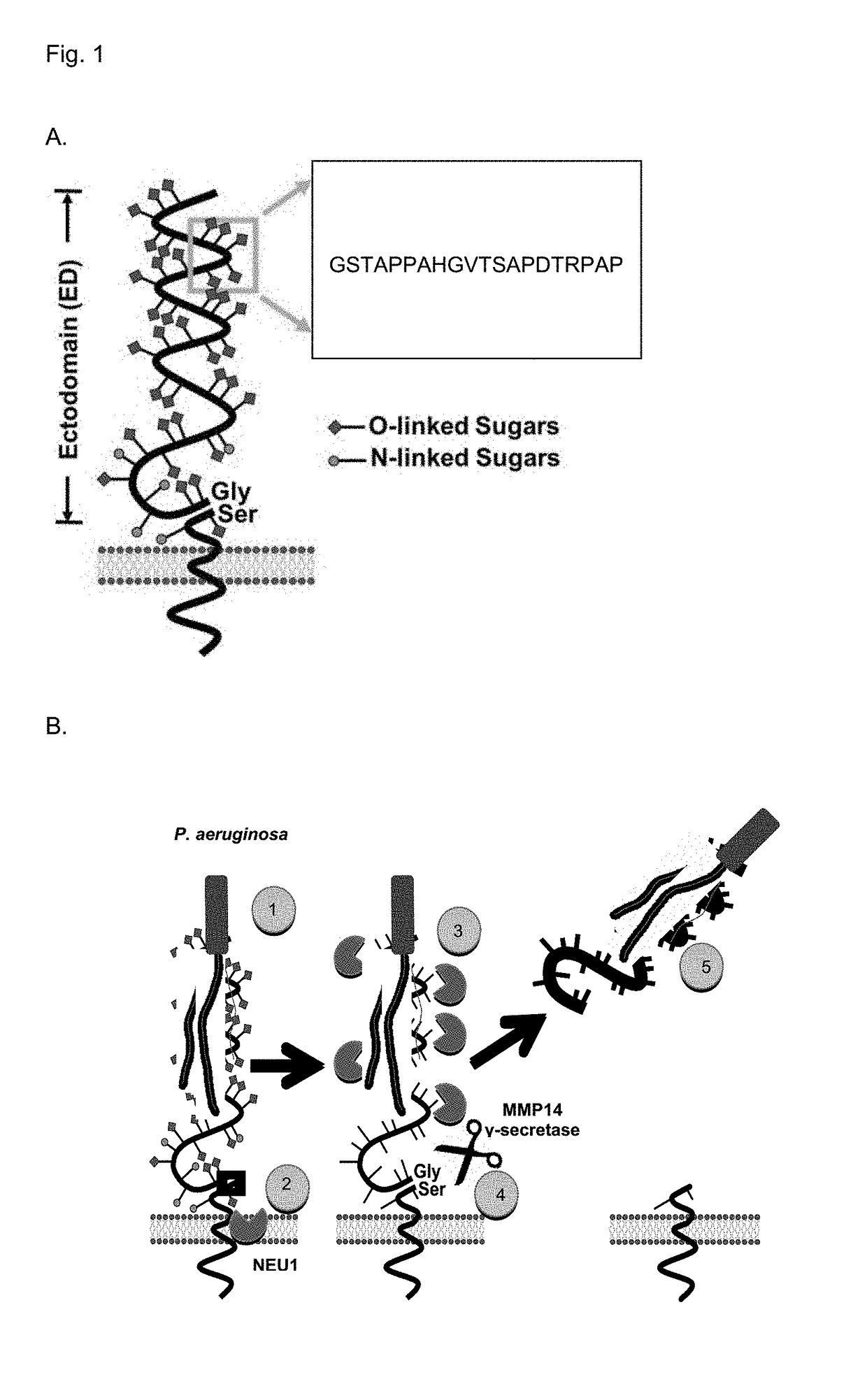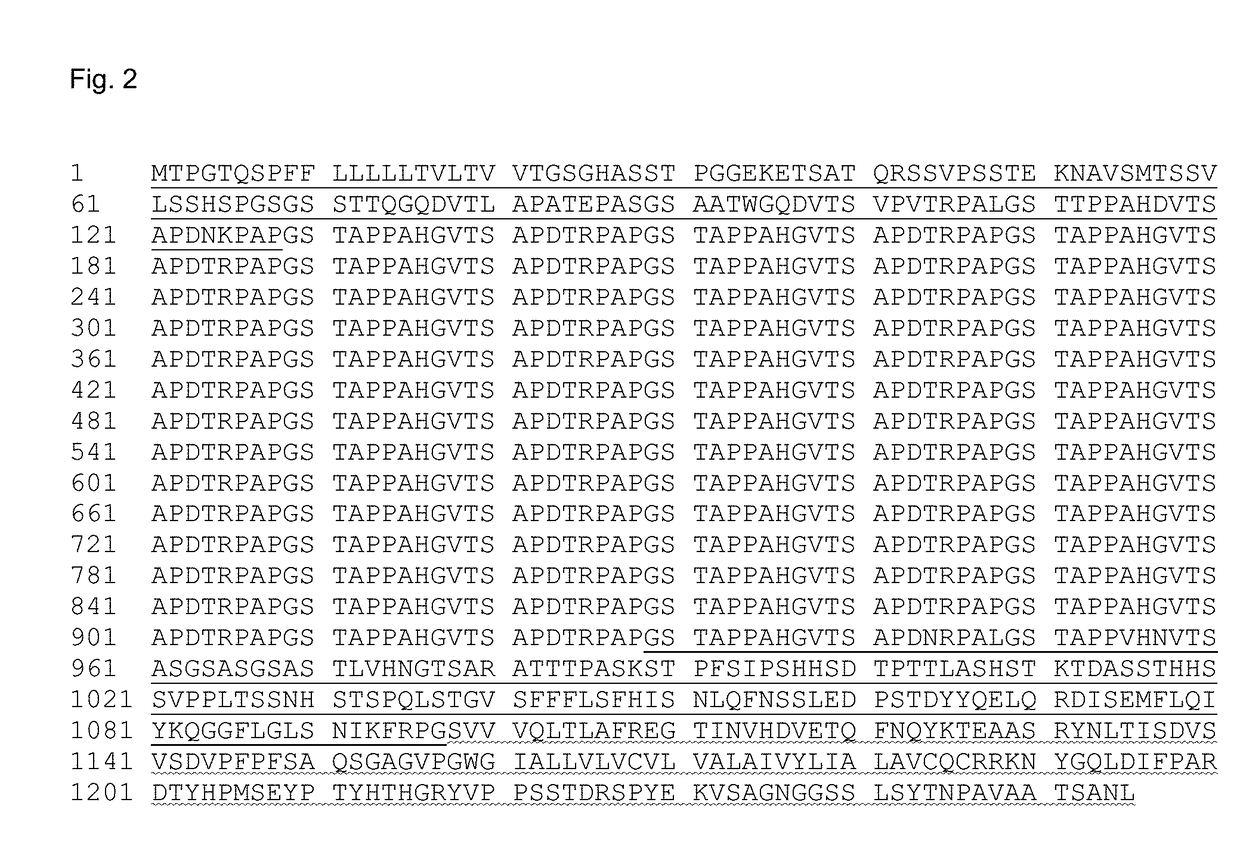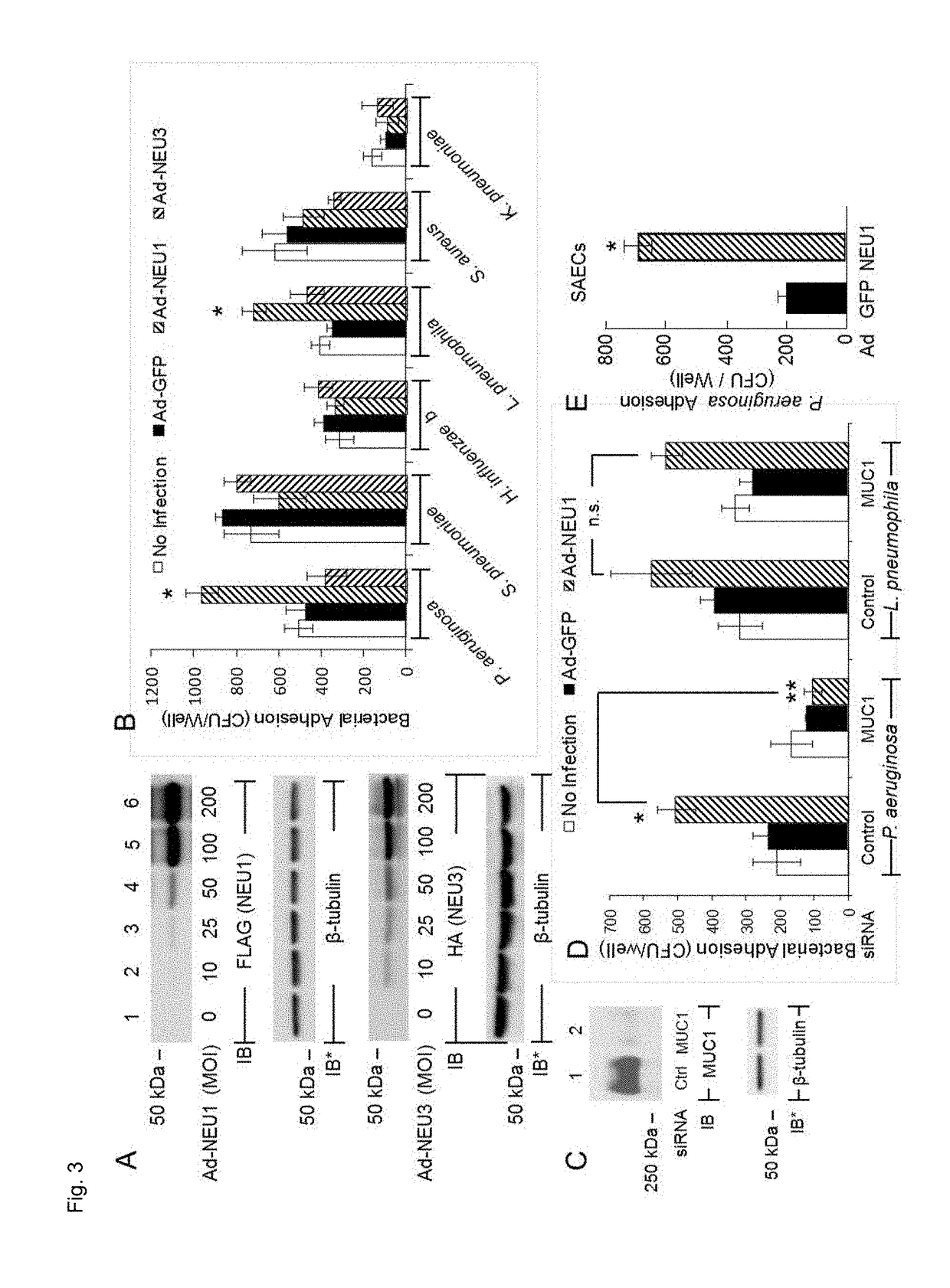Muc1 decoy peptides for treatment and prevention of bacterial infections
- Summary
- Abstract
- Description
- Claims
- Application Information
AI Technical Summary
Benefits of technology
Problems solved by technology
Method used
Image
Examples
example 1
Materials and Methods
[0127]Airway ECs and Ad Constructs. Human A549 lung carcinoma cells (American Type Culture Collection) and primary small airway epithelial cells (SAECs) (PromoCell) were cultured as described (Lillehoj et al., 2012). The ECs were infected with recombinant Ad encoding FLAG-tagged NEU1 (Ad-NEU1-FLAG), hemagglutinin (HA)-tagged NEU3 (Ad-NEU3-HA), catalytically-inactive NEU1 containing a Gly68-to-Val substitution (Ad-NEU1-G68V), or GFP as described (Lillehoj et al., 2012).
[0128]Bacterial Adhesion and Invasion Assays. Airway ECs and ECs infected with Ad constructs, transfected with siRNAs, and / or stimulated with flagellin (2.0×105 ECs / well) were washed with PBS, fixed for 10 min with 2.5% glutaraldehyde, and washed. The ECs were incubated with bacteria (MOI=100), washed, and bound bacteria were quantified as described (Lillehoj et al., 2012). For invasion assays, 2.0×105 ECs / well were incubated for 1 h with P. aeruginosa (Pa) (MOI=100), washed, incubated for 1 h with...
example 2
[0155]Effect of E. coli MUC1-ED With or Without Cefepime on Mouse Survival Following Pseudomonas aeruginosa Lung Infection. P. aeruginosa was administered intranasally to groups of seven BALB / c mice at an LD90 (2.0×107 CFU / mouse). The control group (group #1) received PBS intraperitoneally as therapy; group #2 received MUC1-ED (2.5 μg / mouse) intraperitoneally; group #3 received cefepime (1.0 μg / mouse) intraperitoneally; group #4 received MUC1-ED (2.5 μg / mouse) and cefepime (1.0 μg / mouse) simultaneously, intraperitoneally. The MUC1-ED was E. coli-expressed deglycosylated peptide having the amino acid sequence set forth in SEQ ID NO:2.
[0156]Mouse survival was measured daily and the results are shown in FIG. 14. As can be seen, there was 100% survival over seven days in mice receiving both MUC1-ED decoy peptide and cefepime (group #4), in contrast to mice receiving MUC1-ED decoy peptide alone (˜45% survival; group #2) or cefepime alone (˜62.5% survival; group #3).
[0157]While the invent...
PUM
| Property | Measurement | Unit |
|---|---|---|
| Time | aaaaa | aaaaa |
| Time | aaaaa | aaaaa |
| Adhesion strength | aaaaa | aaaaa |
Abstract
Description
Claims
Application Information
 Login to view more
Login to view more - R&D Engineer
- R&D Manager
- IP Professional
- Industry Leading Data Capabilities
- Powerful AI technology
- Patent DNA Extraction
Browse by: Latest US Patents, China's latest patents, Technical Efficacy Thesaurus, Application Domain, Technology Topic.
© 2024 PatSnap. All rights reserved.Legal|Privacy policy|Modern Slavery Act Transparency Statement|Sitemap



